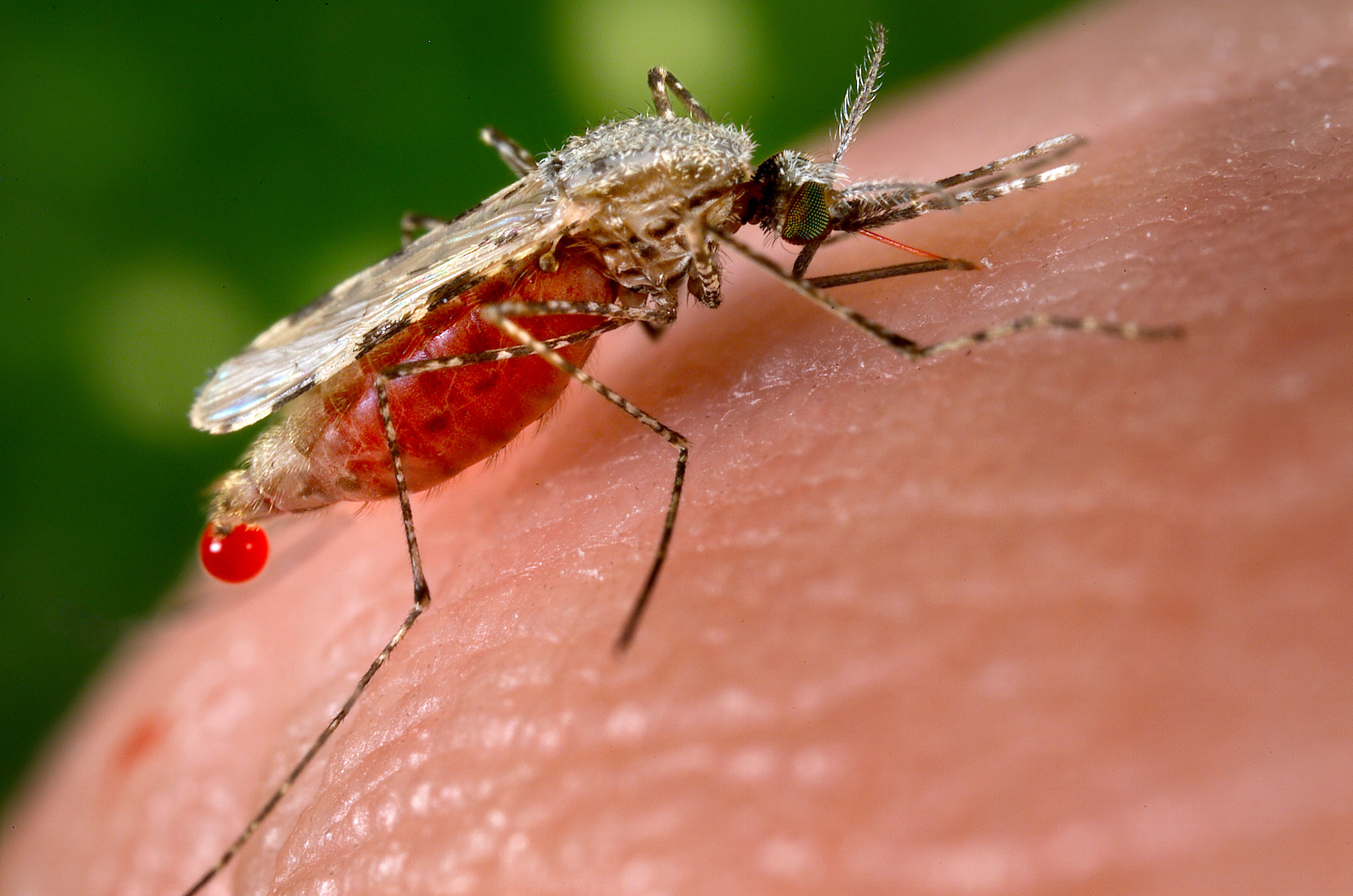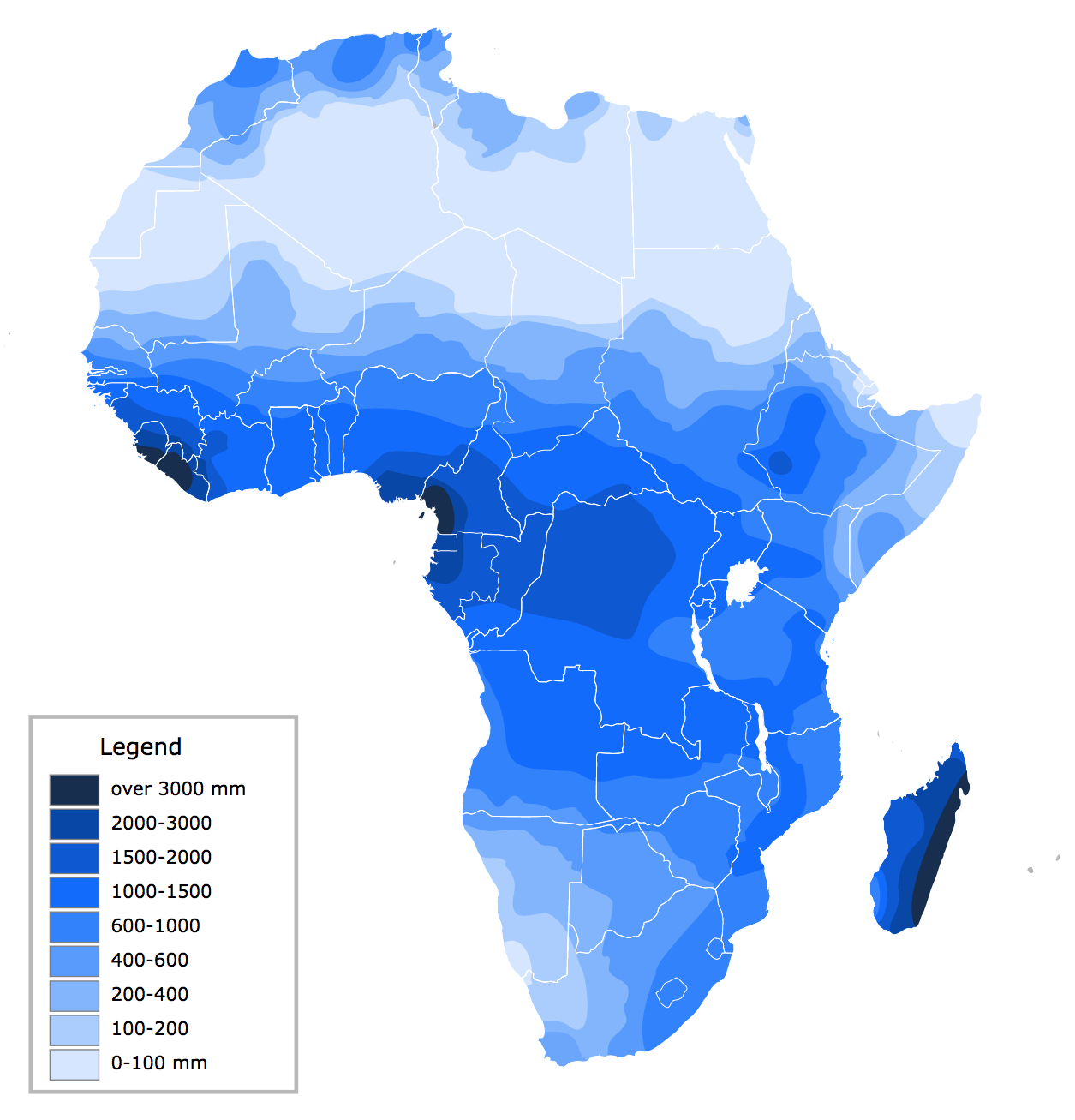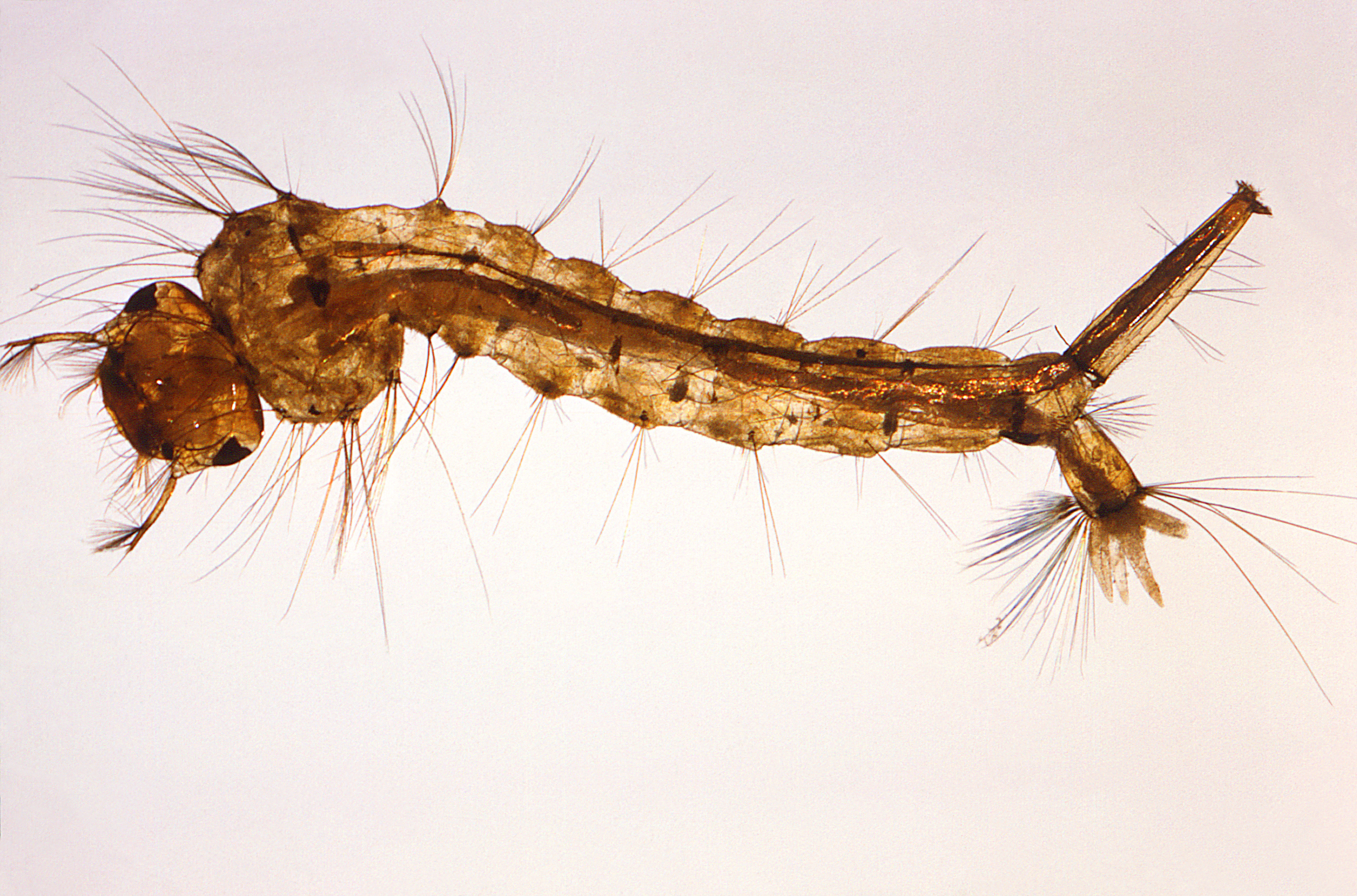Climate Change
4.3 Climate Change Impacts on Malaria Transmission in West African Countries
Brianna N. VanNoy
There is uncertainty about the impacts of climate change on malaria transmission. Climate change models are created in attempts to predict the future of the disease. Could climate change be a positive phenomenon in the fight against malaria in West African countries?

Malaria is a vector-borne, parasitic disease transmitted to humans via the bites of infected female Anopheles mosquitoes.4,6,11 The severity of malaria is dependent on several factors, including the specific species of the Plasmodium parasite.4,11 Plasmodium falciparum is the most virulent malaria parasite in Africa, responsible for the most malaria-related deaths worldwide.4,6,11 Transmission of malaria is dependent upon the survival of mosquito populations, which can be sustained through favorable rainfall, temperature, and humidity patterns.3,7,11 The longer the lifespan of a mosquito, the better chance the Plasmodium parasite has to complete its lifecycle inside the mosquito.1,11
Due to favorable environmental conditions, the presence of the most virulent parasite species, and the “strong human-biting habit” of Anopheles mosquitoes, Africa suffers from the greatest burden of malaria in the world.4,6,11 Of the nearly 500,000 people who died from malaria worldwide in 2015, Sub-Saharan Africa suffered 91% of these cases (Figure 2).4,10,11 While Sub-Saharan Africa carries the greatest burden of disease, West African countries are particularly susceptible to malaria due to extreme poverty and lack of access to care.11,12 According to the World Bank, the average yearly income for an individual in West Africa is only $309, compared to a yearly income of $470 for persons in other Sub-Saharan African countries.13 In addition to poor socioeconomic status, only about 10% percent of the population has access to electricity, and nearly half of the population is illiterate.13 Global eradication efforts including the use of pesticides, bed nets, and development of anti-malaria medications have controlled the transmission in some areas, but malaria remains pervasive in West and Sub-Saharan Africa (Figure 2).5,6,12
Figure 2. Parasites carried by mosquitoes can transport malaria all over the world. Macrogametocyte from the Plasmodium falciparum parasite that may be ingested by a mosquito spreading the malaria virus. Courtesy of Mae Melvin of the Center for Disease Control, 2973, Wikimedia Commons. Public Domain. The plasmodium parasite has some unique characteristics such as the micronemes, the rhoptry, and the polar rings. Courtesy of Jfbrancj14, 212, Wikimedia Commons. CC BY-SA 3.0. Deaths from malaria in Africa in 2012 have been measured per million persons. Data from the World Health Organization groups them by deciles shown in the last figure here. Courtesy of Chris55, 2016, Wikimedia Commons. CC BY-SA 4.0. and the World Health Organization, 2012.
With eradication efforts underway, there is uncertainty about the impacts of climate change on the transmission of malaria in West Africa and other regions. Early research suggested that climate change would result in a “widespread increase in malaria transmission,” but recent studies suggest that rather than increase, malaria transmission may shift in its global distribution.8,13 The disagreement about climate change impacts can be attributed to the limited power of malaria models to properly assess rainfall-dependent processes as well as the difficulty in determining climate change implications in West Africa (Figure 3).8,13
Researchers from the Massachusetts Institute of Technology have developed a model to better characterize the relationship between rainfall patterns and mosquito populations.13 The malaria vectors in Africa typically breed in pools of water formed from rainfall, so researchers sought to better understand the relationship between rainfall and mosquito proliferation by monitoring rainfall patterns and other environmental conditions.7,13 The study utilized the Hydrology, Entomology, and Malaria Transmission Simulator (HYDREMATS) to translate rainfall into water pools, and estimate the impacts of climate change on malaria transmission in West Africa.13 The simulation characterized the association between rainfall and mosquito abundances by evaluating precipitation, evaporation, infiltration, and topographical features in five representative locations in West Africa. Simulations were conducted using climate data from 1980-1999 to establish baseline climate conditions.13 These conditions were coupled with climate change projection data from varying climate change models provided by the Intergovernmental Panel on Climate Change (IPCC). Model outputs were measured in vectorial capacity (VC). Results from the simulation predicted a two to six degrees Celsius increase in temperature, and a high range of variability for rainfall from a decline of 400% to an increase of 260%.13 In arid regions and very wet regions of West Africa, VC is predicted to increase, whereas in transitional zones of West Africa, VC is expected to decrease. Given the variability of rainfall predictions from HYDREMATS, it will be important to closely evaluate rainfall and its role in malaria transmission.13

The IPCC estimates that temperatures in West Africa will increase by nearly 4 degrees Celsius by 2080.8 Changes in rainfall are slightly more difficult to predict, and the IPCC did not report official values for precipitation. However, the IPCC predicts that West Africa can expect to see rising sea levels and variability in rainfall patterns.8 Because mosquito proliferation is partially temperature-dependent, the IPCC suggests that drought (from rising temperatures and variable rainfall) could actually result in a decrease in the Anopheles mosquito populations in Africa.8 Optimum temperatures for the development of the Plasmodium parasite in Anopheles mosquitoes are between 18 degrees Celsius and 32 degrees Celsius.1 Below this range, parasite development decreases, and temperatures above this range appear to be unsuitable for mosquito survival.1 However, Africa is home to the most virulent Plasmodium parasite species and the most persistent Anopheles mosquitoes, which can result in swift adaptations to new ecological niches including swamps or springs.8 Moreover, a recent study suggests that fluctuating temperatures may not have a large effect on developmental rates of certain Anopheles mosquito species. Furthermore, extreme weather events and irregular rainfall patterns could provide opportunities for mosquito proliferation at unexpected times.7
Although there is uncertainty about the impacts of climate change on malaria transmission in West Africa, it is important to note that malaria is already highly endemic in the region. Thus, climate change will not be the sole factor to consider when developing strategies to combat malaria. According to a study published in 2011 that evaluated the opposing effects of climate change on malaria transmission when coupled with socioeconomic development, malaria risk will exhibit relatively no change in areas of West and Sub-Saharan Africa by 2050.2 The model was created using spatial patterns, and researchers note that in regions where the gross domestic product (GDP) is less than $20,000, climate change could have a larger impact on malaria transmission.2 These modeling results are expected considering that malaria is often exacerbated by poverty.4,11,12 This study suggests that although climate change may not have a substantial impact on malaria transmission in West Africa, climate change coupled with socioeconomic burden may provide an additional hurdle for malaria eradication efforts.2

The West African burden of malaria and the factors that influence transmission are multi-faceted and convoluted in nature. As the global implications of climate change become more apparent, experts expect that poor nations will unfortunately have a greater share of the hardship.9 However, given the uncertainty of climate change impacts on malaria transmission, there is some hope that warming temperatures in West Africa may not exacerbate malaria transmission, but may rather play a role in slowing the rate of transmission.8 Yet, with the coupling of extreme poverty, lack of public health infrastructure, limited data, and the strength of Anopheles mosquitoes as vectors, these claims are impractical given the current state in West Africa. Development of better climatic models, as well as financial and educational strategies to alleviate confounding factors of malaria transmission, are necessary to lessen the burden of malaria in West African countries and create healthier futures for the next generation.
References:
- Ayanlade, A., et al. (2013). Intra-annual climate variability and malaria transmission in Nigeria. Bulletin of Geography, 21(21): 7-19.
- Béguin, A., et al. (2011). The opposing effects of climate change and socio-economic development on the global distribution of malaria. Global Environmental Change, 21(4): 1209-1214.
- Caminade, C., et al. (2014). Impact of climate change on global malaria distribution. Proceedings of the National Academy of Sciences, 111(9): 3286-3291.
- Centers for Disease Control and Prevention. (2015, September 22). Impact of Malaria.
- Gubb, L. (June 12, 2007) New Malaria Program Blankets Areas of Ethiopia with Bed Nets. The Carter Center. Retrieved from http://www.cartercenter.org/news/features/h/malaria/bednets_ccn07spr.html
- Kim, Y., & Schneider, K. A. (2013). Evolution of Drug Resistance in Malaria Parasite Populations. Nature Education Knowledge, 4(8):6.
- Lyons, CL, et al. (2013). Stable and fluctuating temperature effects on the development rate and survival of two malaria vectors, Anopheles arabiensis and Anopheles funetus. Parasites & Vectors, 6(104). doi: 10.1186/1756-3305-6-104
- The Organization for Economic Co-operation and Development (OECD). (2008, January). Climate and Climate Change. Atlas on Regional Integration in West Africa.
- Revkin, A. (2007, April 1). Poor Nations to Bear Brunt as World Warms. The New York Times. Retrieved from https://nyti.ms/2lBAMbP.
- UNICEF (October 11, 2010) Malaria Prevalence per 100,000 Population.
- World Health Organization. (2015, October). Malaria. Retrieved from www.who.int/mediacentre/factsheets/fs094/en/.
- The World Bank. (2015). West Africa: Facts and Figures.
- Yamana, T.K., & Eltahir, E.A. (2013). Projected Impacts of Climate Change on Environmental Suitability for Malaria Transmission in West Africa. Environmental Health Perspectives, 121(10): 1179-1186.
Figures:
- Chris55. (2016). [Africa malaria deaths map]. Modified from Wikimedia Commons. CC BY-SA 4.0.
- Collins, Williams. (2016). [Photograph of Anopheles stephensi mosquito]. Retrieved from Pixnio. Public Domain.
- Delphi234. (2014). [Africa Precipitation Map]. Retrieved from Wikimedia Commons. CC BY-SA 4.0.
- Jfbranch14. (2012). [Model of a plasmodium]. Retrieved from Wikimedia Commons. CC BY-SA 3.0.
- Melvin, Mae, Center for Disease Control and Prevention. (1973). [Photomicrograph of macrogametocyte in blood smear]. Retrieved from Wikimedia Commons. Public Domain.
- Weinburgh, Harry. [Photograph of mosquito larvae]. Modified from http://www.freestockphotos.biz/stockphoto/17031. Public Domain.
- World Health Organization. (2012). Estimated Deaths 2012. [Data for Africa malaria deaths map].
